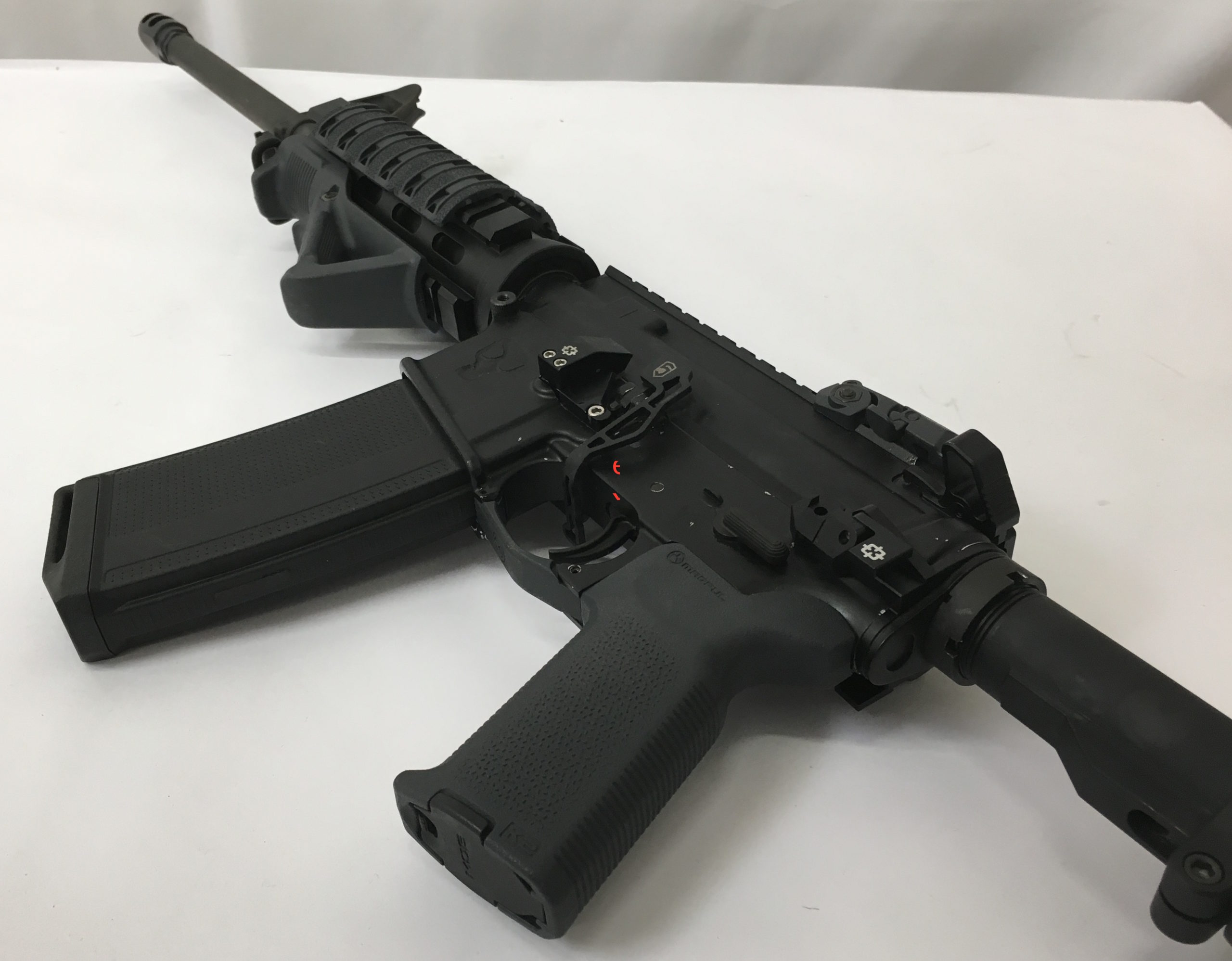This is the second part in a four-part series regarding the new laws and regulations in California starting Jan. 1, 2018. Part two discusses assault weapons and will be followed by ghost guns and large-capacity magazines.
Perhaps the most debated topic concerning the Second Amendment is assault rifles. Or, what is the definition of an “assault” rifle?
In Democratically controlled states, like California where we are headquartered, zealous legislators are taking extreme liberties in redefining rifles such as the AR-15.
It’s just one reason why Cross Armory Chief Engineer Wes Cross invented and patented the SAFE MAG, QUICK PINS, STOCK LOCK and PIN PAL accessories. They are needed so law-abiding residents can safely and legally shoot with out fear of breaking the law in a retroactive manner. The SAFE MAGE is a state-of-the-art fixed mag solution, the most popular among California residents.
Most of the legislation passed in 2016 concerning assault weapons has been enacted, although there is still one regulation left.
Dec. 31 is the last day for assault weapon owners to register their newly designated weapon. But what does that mean?
First, the new definition of an “assault” weapon has been extended until July 1, 2018 because the state’s system wasn’t up and running.
Richard Berwick, president of Cross Armory, said the company had to wait to release its product because the business wasn’t sure how the state would enforce the new law, which has since been delayed.
“The bullet button was never really efficient,” he explained. “We read the law and the regulation and designed the product (SAFE MAG) to specifically to operate in a way described by the law not constituting an assault weapon. We found the disassembly of the action very inconvenient.”
The state was delayed because it was “impossible” to know how to register and the state hadn’t even set up the registry. Even worse, the state was caught adding regulations not in the original law.
“The regulations has overstepped the scope of the law,” Berwick said. “They were re-released in May, and then the regs were denied by the Office of Administrative Law (OAL), who’s job is to say these regulations you’ve published capture everything in the law, but no more than everything that’s in the law.”
Michael Schwartz, executive director of the San Diego Gun Owners (SDCGO) Political Action Committee, said there are four options for individuals who own guns that will soon be redefined. The new law only applies to rifles with a bullet button.
Those options are:
- Get rid of your rifle.
- Register the weapon, paying the fee and sending in pictures of the rifle.
- Change the features on the rifle to make it featureless.
- Find a product that replaces bullet buttons (such as QUICK PINS) that require the weapon’s receivers to be separated when reloading.
“If you register your gun as an assault weapon, you have to keep the bullet button on it … and basically giving law enforcement the right to come into your house anytime to see if your gun is stored properly,” Schwartz explained. “It’s not necessarily taking away you’re 4th Amendment right, but certainly is taking a big bite out of it.”
In addition, currently all bullet button rifles must followed the same rules as assault weapons. For example, it’s either in the shooter’s hands at a private range or in a gun safe at your residence.
There is ongoing litigation, Schwartz said, is working through it way through the federal courts, but said not to “hold your breath,” noting it takes years to ejudicate these cases.
Complying with the law
There are many California residents saying they will not comply with the new law regarding assault weapons.
Schwartz, however, said that is a terrible idea. First, anyone arrested for not complying will lose their gun rights, especially if it’s a felony charge. Also, lawyer’s fees will be massive and jail time is a possibility.
“What you need to do is comply and then get involved with organizations that are going to help elect the right people to change the laws,” Schwartz said. “It’s a bad idea to stand up and say, ‘I’m not going to comply.’ It’s even worse that you are so mad, that you don’t comply and don’t doing anything about it.”


